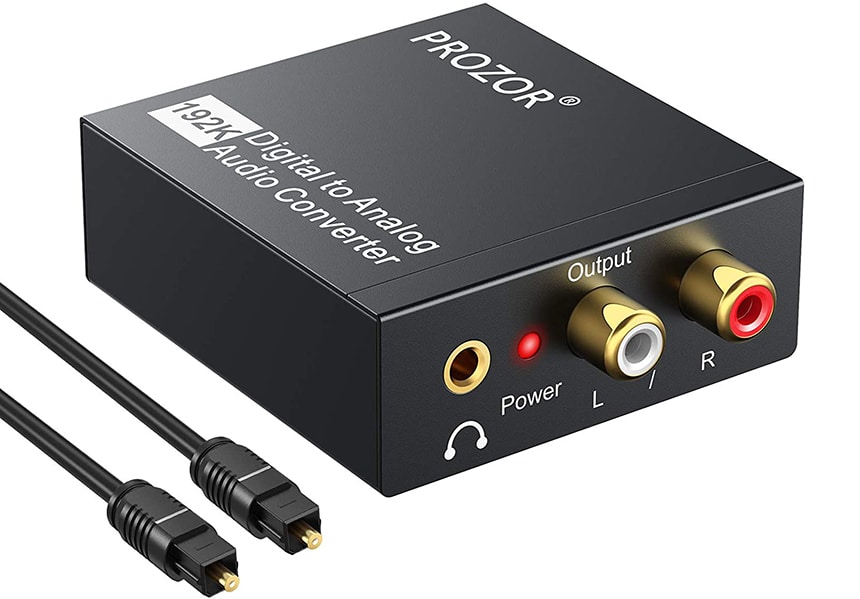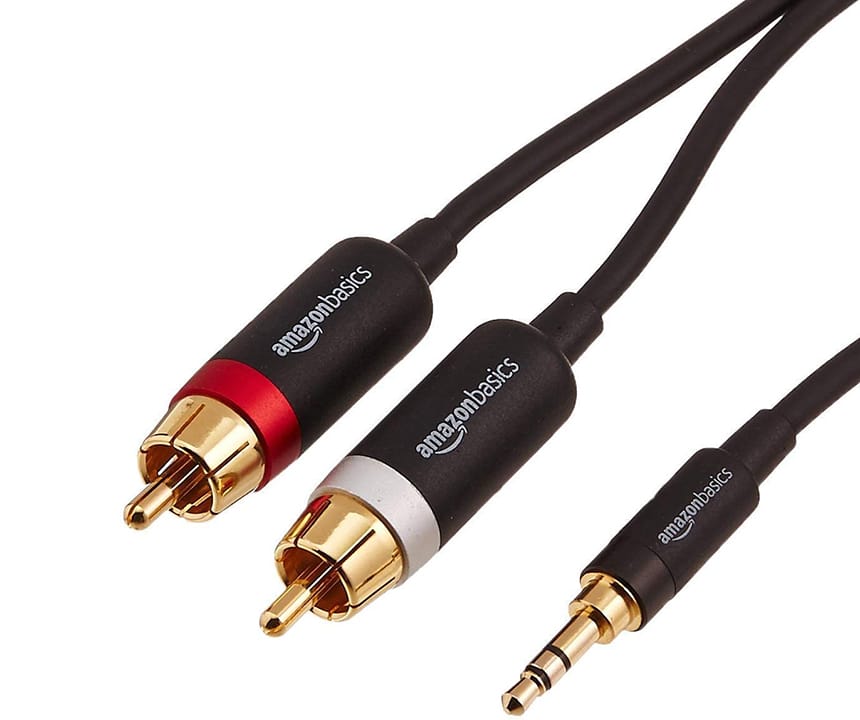Modern TVs generally offer many user-friendly features. However, there is one thing that most TVs still lack and that is a superior sound system. The built-in speakers are usually not the best ones for a complete home theatre experience. This is why most people connect speakers to their television sets. If you’re wondering how to connect speakers to TV then you’re in luck as this guide will show you how to do that!
These speakers can easily be connected to your TV for a well-rounded experience! You can use your existing speakers or get a new sound system for this purpose. There are a number of connectivity options that allow you to link your speakers with your TV.
Here, we have prepared a detailed guide on how to connect speakers to TV using two main techniques.

Connecting external speakers to your TV using a wired sound system is an easy task. However, specifics may differ based on the TV that you own. Therefore, it is best to always keep the instructions manual of your devices in a safe place for times like these.
The manual will come in handy when you have to connect the output connectors of your TV with the input connectors of your sound system. The manual contains instructions about the location of these connectivity ports.
Now that we have established that, let’s get into the step-by-step process of actually connecting the speakers to the TV.

When it comes to choosing cables for connecting external speakers to TV, RCA cables are the most popular kind because they are the easiest ones to connect. These cables have only two types of sounds that include stereo sound i.e., two channels with left and right, and not surround sound.
However, these cables are not compatible with a basic stereo set or 2.1 speakers. Moreover, RCA cables will only be able to play a stereo sound when using surround speakers. These cables come in a pair, with red and white indicators that can be connected to the pair of connectors or ports.
The red and white RCA output ports on your TV hold these cables and the other end is connected to the input ports in your speakers. In case you have a 2.1 speaker, the cables go in the subwoofer unit. If your cables are not compatible with the output and input ports of your speaker and TV, you can use a digital to analog converter like the PROZOR 192KHz Digital to Analog Audio Converter.

A 3.5mm analog cable can be used for connecting your TV to external speakers if your TV does not have an RCA compatible port for audio output. 3.5mm ports are usually used for headphone connectivity, with a smaller 3.5mm analog cable pin. These cables are found easily and can be used for connecting your TV set with an external superior sound system.
These cables are commonly used with smaller devices, such as smartphones, laptops, and tablets. You can get cables that have one end with an RCA analog and one with a 3.5 mm pin, which can be connected to the 3.5 mm TV jack and RCA jack for the speaker, respectively.
You can buy the Amazon Basics 3.5mm to 2-Male RCA Adapter Audio Stereo Cable, which is a 4 feet long cable with both RCA and 3.5 mm ends. However, some speakers also lack an RCA jack, in which case you can use a 3.5 mm to 3.5 mm cable that will connect the TV to speakers from 3.5 mm output and input jacks.
These cables are ideal for regular multimedia speakers. However, they lack the capacity to provide surround sound. Despite this, you will still be able to get louder volume using your multimedia speakers as compared to your TV speakers. If you are looking for a good quality 3.5 mm analog cable, you can consider buying the KabelDirekt 6ft Auxiliary 3.5mm headphone jack cable & Aux cord for excellent connectivity.

If you are looking for a truly epic surround sound experience to make your movie nights more exciting, you should opt for HDMI cables. HDMI cables provide a more sophisticated connection, as compared to RCA or 3.5mm cables because they do not lose any sound quality. This is one of the reasons these HDMI cables are able to transmit surround sound.
These cables are most often supported by surround sound speaker sets, receivers, and soundbars that do not have HDMI input jacks. In order to use HDMI cables, your TV requires an HDMI output port, which is labeled as HDMI-ARC in some TVs. You can connect the speaker and TV using the HDMI ports in each.
HDMI cables are also used for connectivity if your receiver or amplifier setup contains HDMI input jacks. In case your TV is missing an HDMI output port, you can easily use other devices, such as gaming consoles and laptops to channel an HDMI cable through the amplifier or receiver, and then another HDMI cable from the connected device’s output port to link the TV.
If you do this for connection, you can use the receiver’s remote to switch between inputs to receive audio from the external speakers. This connection is especially useful in case your TV doesn’t have an HDMI-ARC, as well as if you want to use the speakers for music without turning on your TV.
If you are looking to get a good HDMI cable, you should consider the PowerBear 4K HDMI Cable, which is a 10 feet long high-speed cable.
Even though optical cables have a great performance, almost as good as HDMI cables, they are hardly ever used for this purpose. However, if your TV comes with an optical output port, you can use an optical cable to connect it to your soundbar or receiver. This will achieve surround sound audio.
The best thing about optical cables is that they are sleek, thinner than HDMI, and less complicated than RCA cables. If you use optical cables for connecting your TV to external sound systems, you will require altering the TV’s settings so that the audio is sent through the optical cable and not the TV’s internal sound system.
You might need an amplifier or receiver to connect external speakers to your TV. This can be done separately in case your speaker does not have a built-in amplifier, like power speakers or computer speakers do. You can use a home theatre receiver and even a stereo amplifier, which can be connected using AUX cables, which go in the auxiliary audio inputs.
If you don’t have a receiver or an amplifier, you can still connect speakers to your TV. The only reason you need a receiver is to achieve better surround sound quality. Before you connect your receiver to your speaker, make sure to learn about power issues in case you experience any on a regular basis.
If you want to buy new speakers that you can connect with your TV for a better viewing experience, you need to look for an option that is the most compatible with your TV.
You can consider soundbars to improve the audio experience for TV viewing. These speakers provide a relatively immersive sound quality, which is not as good as a full surround sound but offers clean and clear audio. They are small in size and easy to set up, as well as available in low-budget options!
You can also use surround sound speakers, such as Dolby Atmos speakers that create a rounded 3D audio, offering a complete theatre experience. You can learn more about the different kinds of speakers available as this will help you decide which ones are best for your needs and preferences.
You can also buy affordable computer speakers for connecting to your TV. There are some best ones that are sure to revolutionize your movie nights when connected to your TV.
Sometimes messing with cables can be difficult. Chances are your speakers do not support wired connectivity options. Such instances call for wireless connectivity. This is another way in which you can connect speakers with your TV.
You can use wireless headphones as they are a convenient external audio source. They offer a high-quality surround sound and filter out external disturbances and noise. Wired headphones are not the best to connect to your TV because their cables are short. However, some TV sets come with smart options that let you connect your wired headphones to the remote controller of your TV.
Wireless headphones are perhaps the most convenient and best suited for TV connectivity. These headphones can have a base station that can be paired with your TV or you can connect the headphones to a receiver, which is connected to your TV. Some smart TVs offer a Bluetooth option that lets you pair your Bluetooth-operated headphones with your smart TV. This can be easily done by following the on-screen options.
Another wireless option is a Bluetooth transmitter. These devices are like external dongles or boxes that can be connected to your TV. This creates a Bluetooth signal for your TV and lets you connect Bluetooth speakers or headphones. However, using this method of connectivity can be quite frustrating at times because the audio can lag causing the sound to get disturbed.
You may come across some common issues when using external audio sources, like speakers and sound systems for TV viewing. One of them is the failure to power your audio bar. This usually happens if you forget to switch on the power socket. As unlikely as it sounds, it happens to everyone!
Another issue is to hear audio from the TV’s internal speakers despite connecting your external sound system properly. You need to check the TV audio settings to change the audio output from TV speakers to externally connected speakers.
Other times the controls fail to work and the TV’s remote controller only works for TV audio. In this case, you need to alter the volume using the sound control on your external soundbar or speakers.
We can all agree that sound is essential when it comes to enjoying a good movie, or just watching your favorite sports game. Listening to some amazing sound effects can make a world of difference in the whole viewing experience.
However, poor-quality TV audio can be frustrating and spoil your experience. You can now have a better viewing and listening experience by easily connecting a superior sound system to your TV and making your home theatre a coveted thing.
We hope that our detailed guide on how to connect speakers to TV proves useful for you! Let us know how it goes and feel free to drop any suggestions or tips that you may have!